Valencia, on Spain’s Mediterranean coast, is the country’s third-largest city. As well as being known for its medieval old town, food markets, beautiful beaches and friendly atmosphere, it is the home of one of the world’s most famous dishes: paella.
In the local Valencian language, “paella” refers to the wide, shallow pan with handles in which the rice dish is cooked – although often in forms that would make Valencianos weep.
The dish is much more than just food, however; as a representative from Visit Valencia, the city’s tourism board, tells me, “Paella is to Valencia what the Eiffel Tower is to Paris.”
When in Valencia, you quickly begin to understand why its people are so proud and protective of the dish. I ask my taxi driver from the airport – always the best starting point for recommendations on where to eat in a city – and he rattles off the names of three paella spots, going into forensic detail as to how each is different.
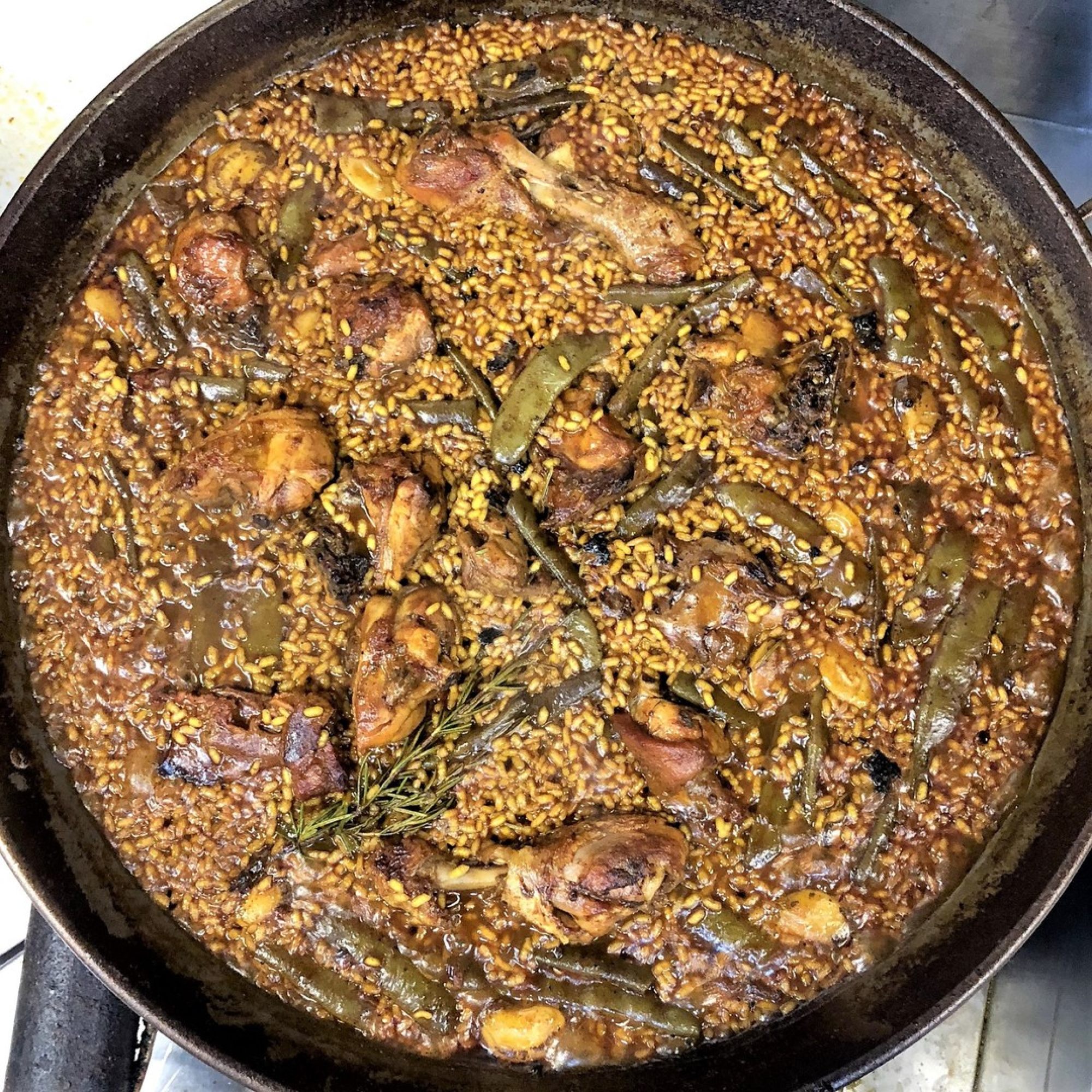
This wasn’t my first visit to Valencia, as my parents once lived there. I remember being slightly stunned in a restaurant when, staring back up at me from the middle of a paella, was a rabbit skull. What I didn’t know then – but do now – is that it was a sign of authentic Valencian paella.
Chef Ferran Adria reopens the ‘world’s best restaurant’ El Bulli as a museum
Chef Ferran Adria reopens the ‘world’s best restaurant’ El Bulli as a museum
One popular tweet compared Oliver’s version to “Monkey Christ”, the infamous restoration of a well-known Spanish church fresco.
Paella originated as a dish for poor farm workers, made from ingredients they could easily get their hands on. It was first served around 400 years ago in and around the Albufera lagoon, 15 miles (24km) south of Valencia. To this day, the area remains surrounded by hundreds of rice paddies.
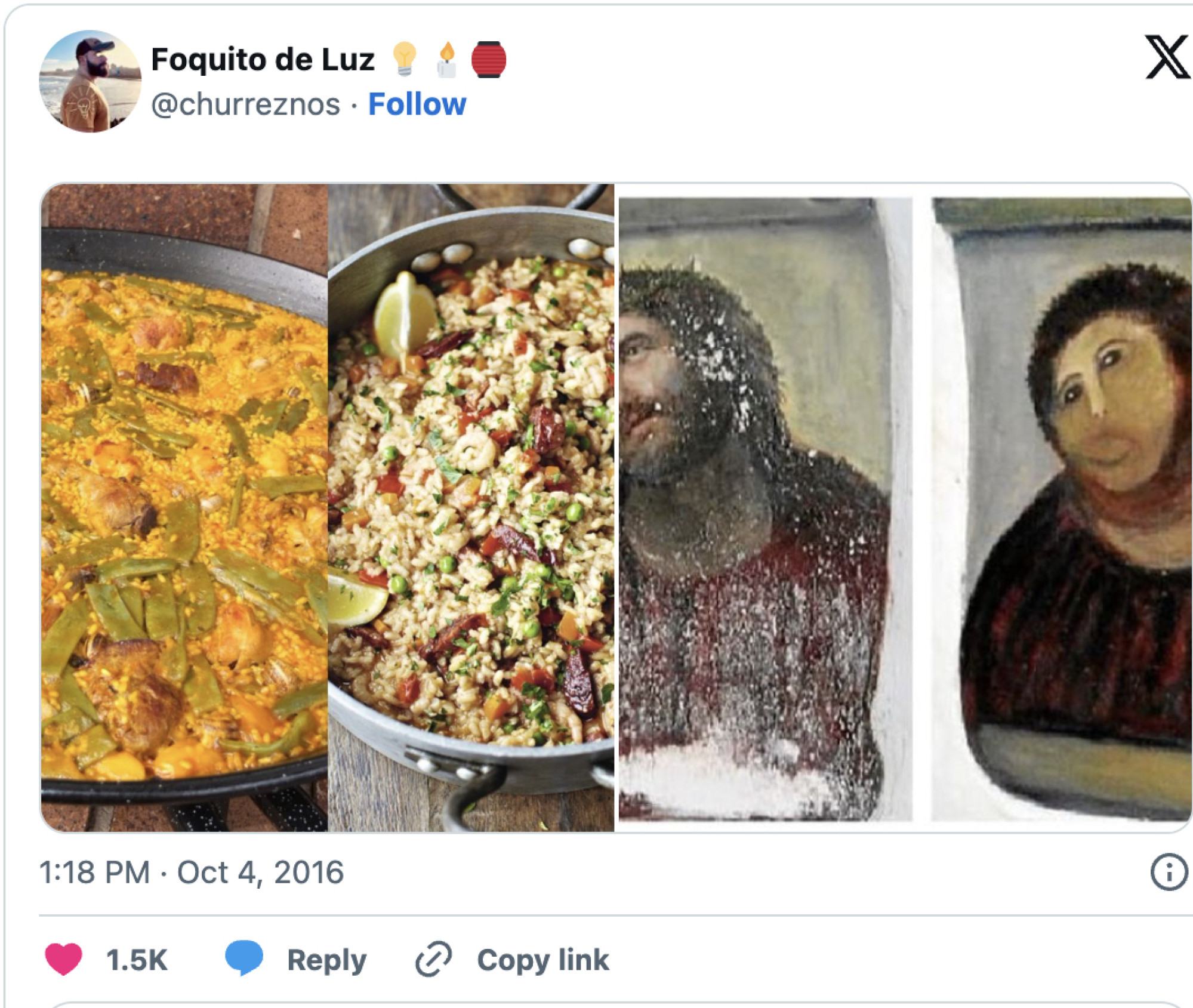
The round-grain rice varietals used in paella are bomba, senia or albufera. Along with saffron, the only other ingredients allowed in a true Valencian paella are water, olive oil, salt, tomato, flat ferradura green beans, butter beans, chicken and rabbit.
Tradition has it that paellas were cooked for farm workers over open fires, ideally made with wood from the orange trees which still cover the region – this technique is still practised by a handful of traditional restaurants in Valencia.
Where to eat and drink in Barcelona? We ask 4 of the best Spanish chefs
Where to eat and drink in Barcelona? We ask 4 of the best Spanish chefs
Purists then insist on one final touch to enjoy the ultimate Paella Valenciana – eating it with a spoon made from olive wood.
Of course, the reality today is that the vast majority of paellas are a million miles from the original. Seafood and squid ink versions abound, while paprika, snails and artichokes are commonly added in local paellas.
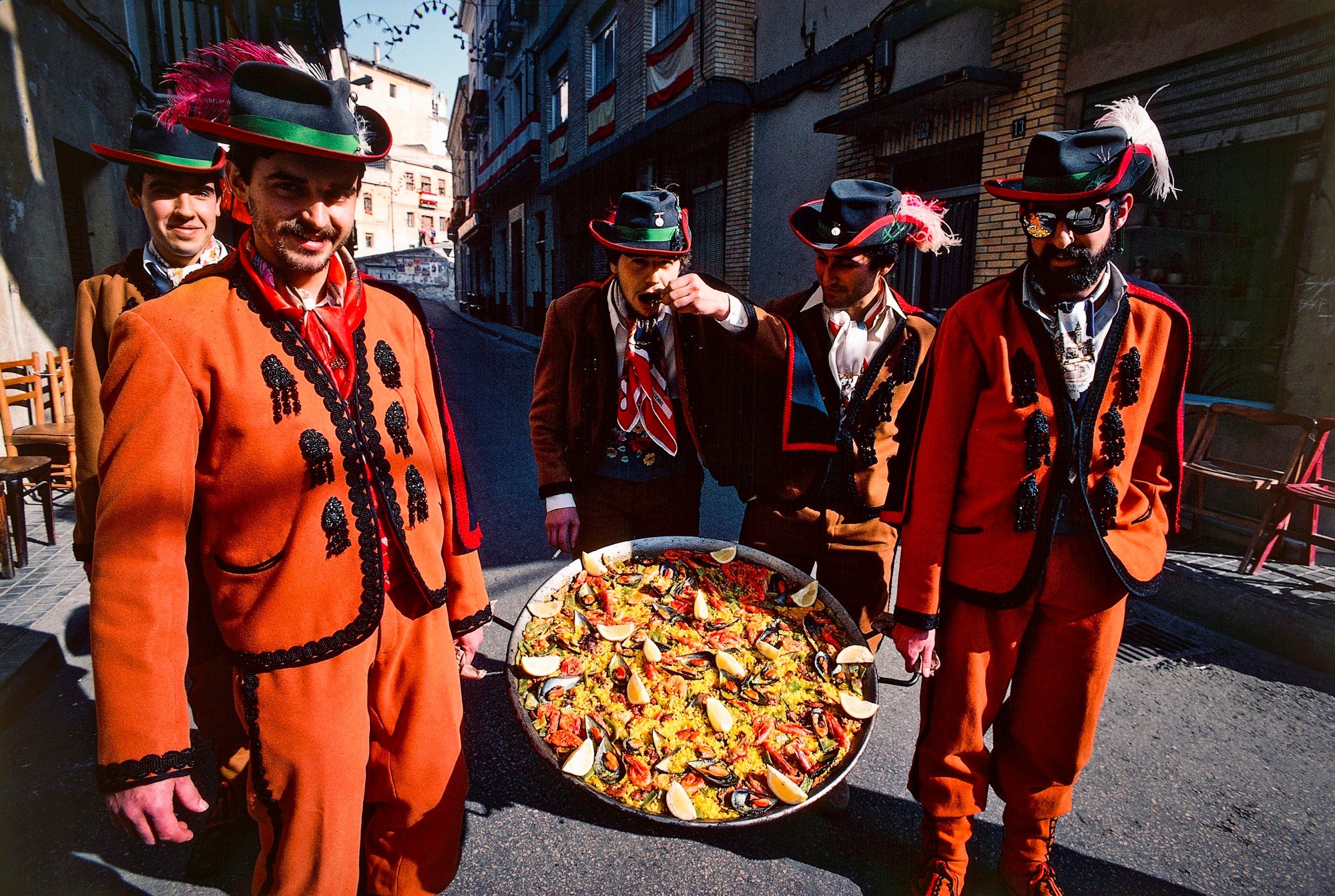
As such, many authentic paella restaurants in Valencia close completely come late afternoon – in other words, only tourists eat paella for dinner. (My first paella experience came at seven in the evening, a time when many Spanish are just finishing lunch, let alone thinking about dinner. And no, it wasn’t the classic.)
High-end Spanish chefs in Hong Kong move on from molecular gastronomy
High-end Spanish chefs in Hong Kong move on from molecular gastronomy
The author’s endorsement has made the restaurant a huge draw for tourists, with a long line just to get in the door. Instead, I head a few steps away to El Tridente. Given its location about 100 metres (330ft) from the warm waters of the Mediterranean, and chef Miguel Verdu’s reputation as a seafood maestro, the siren call of its paella mariscos was irresistible.
It can be rare to see paellas made for one, but the restaurant happily obliged with an individual pan, which arrived after about 40 minutes – any genuine paella is made to order.
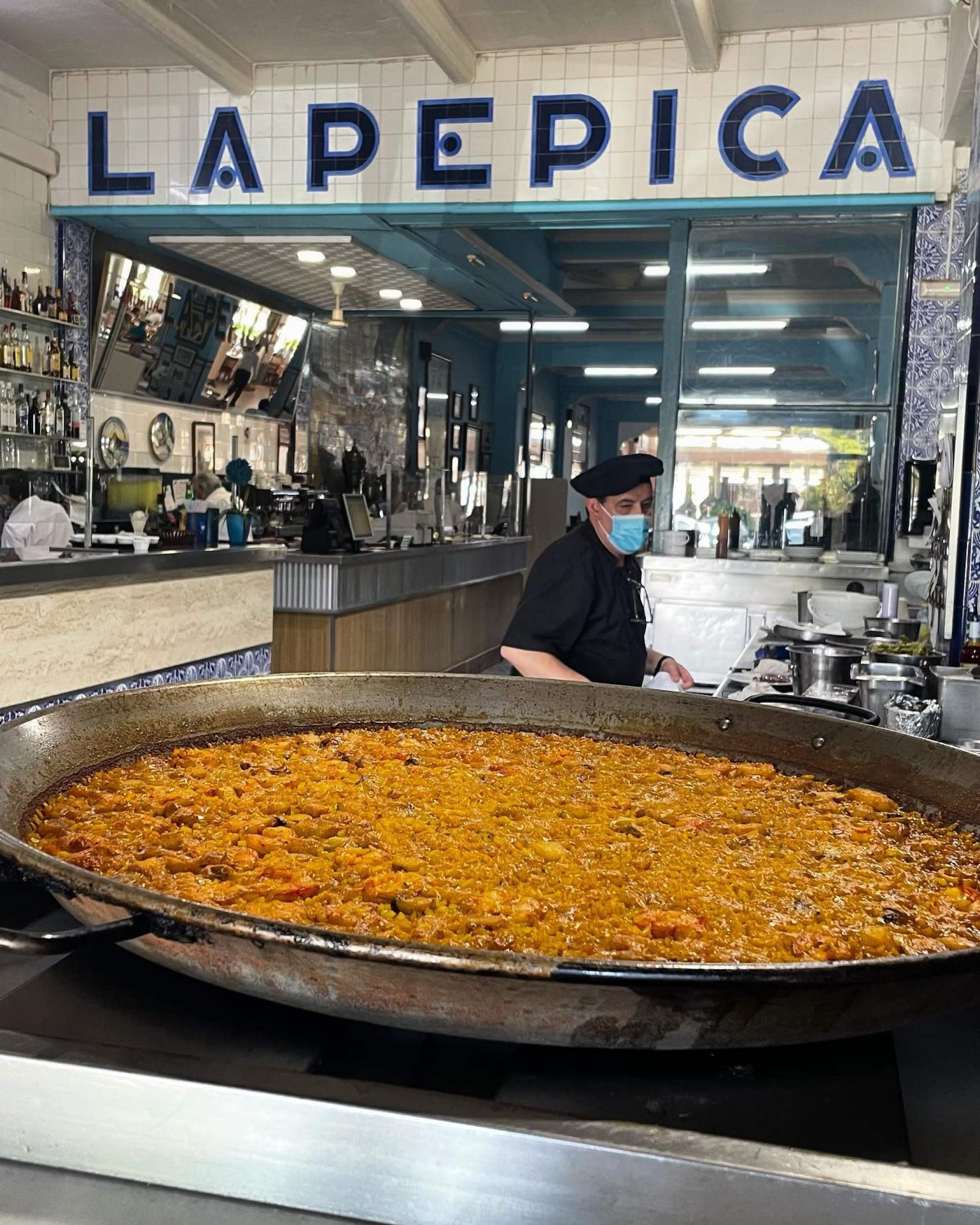
Bouncy squid rings, crayfish and shrimp fought for attention atop the rice, making this a bargain at €18 (US$20). But the rice should always be the hero of a paella, and that was the case: the scorched socarrat demanded vigorous scraping to get every last morsel.
The thin layer of rice – it should always be thin, and any visible sauce is a definite no-no – had taken on the deeply caramelised flavours of all the seafood.
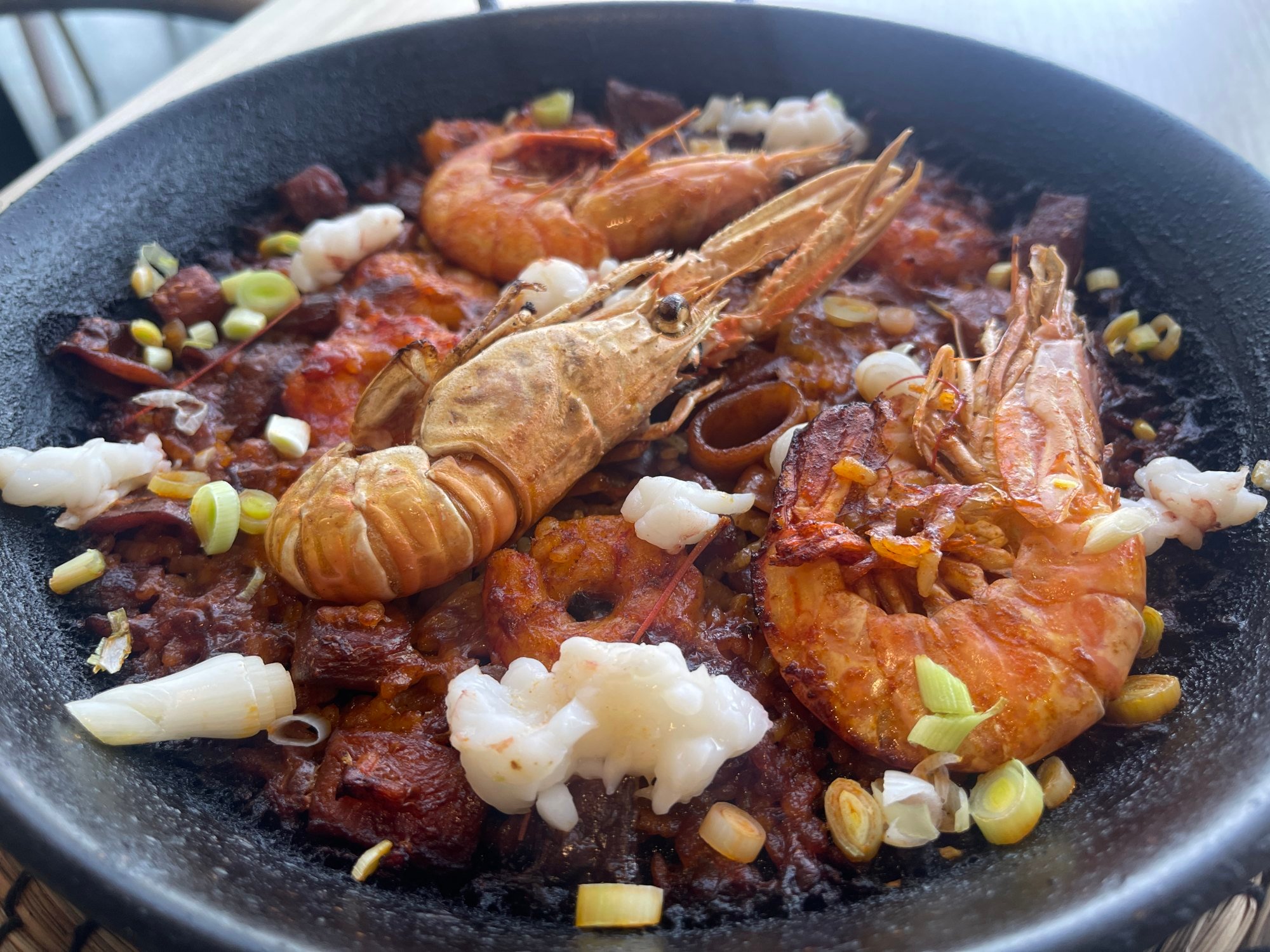
I ate Paella Valenciana at Palace Fesol, in the heart of Valencia, which has been cooking the dish for more than 100 years, as its walls decked with black and white photos of Spanish stars of stage and screen attest.
Its paella didn’t disappoint; this was a triumphant version for two that showed exactly why the dish has stood the test of time and is so resolutely defended.
The butter beans were creamy while the ferradura beans retained bite and freshness.
Chicken – and yes, rabbit, but no skull – imparted their own flavour and texture, but most of all, the grains of rice were sticky, burnished a dark yellow through saffron, all carrying an astonishing depth of slow-cooked flavour and notes of burnt wood.
There was not a slice of chorizo or a pea in sight.

